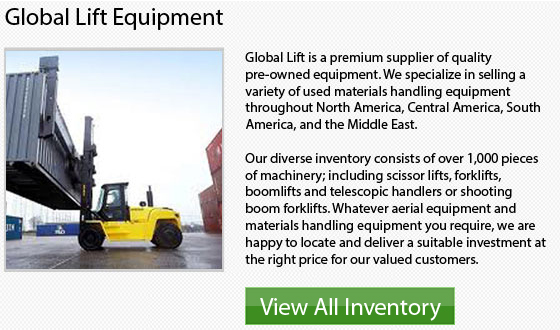
The following add-ons are useful for narrow aisle forklifts:
Side shift: Side shift is an option that allows the lateral movement of the load without having to move the model. This allows loads to be precisely placed.
Tilt mast: The tilt mast option enables the forks to shift forwards and backwards. This is recommended in cases where loads aren't entirely level. To gain more stability while transporting a loaded truck, the mast can be tilted backwards.
Extendable forks: Extendable forks help the reach of a lift truck to allow for the stacking of pallets one in front of the other. This is known as double deep loading.
Operator platforms: Operator platforms allow some NA lift trucks to lower and raise the operator while the forks are being lowered or raised. This provides optimum control and visibility while handling loads at heights of 6 to 9 meters.
Lift Truck on a Ramp
Lift truck operators should be well taught on the machines. They are required to be tested and licensed or certified. It is vital for anyone using a forklift to be knowledgeable about safety issues and regulations. Drivers must understand how to adjust in cases where the weight of the load alters the center of gravity or on uneven surfaces. Safety rules cover the safe use of a forklift on a ramp, which is frequently happening because the driver will typically have to drive up and down ramps to load and unload containers.
Suggestions for Utilizing a Forklift on a Ramp
1 While approaching and driving up and down the ramp, drive at slow speeds. The possibility of accidents is higher when driving fast since this could upset the machine's center of gravity.
2 When not carrying a load, drive the lift truck in reverse while moving up an incline on a ramp.
3 While moving down an incline on a ramp with no load, drive forward.
4 When moving down or up a ramp when carrying a load, tilt the forks back a little to shift the load's center closer to the front of the equipment.
5 Drive forward up a ramp when carrying a load in order to make the load more steady.